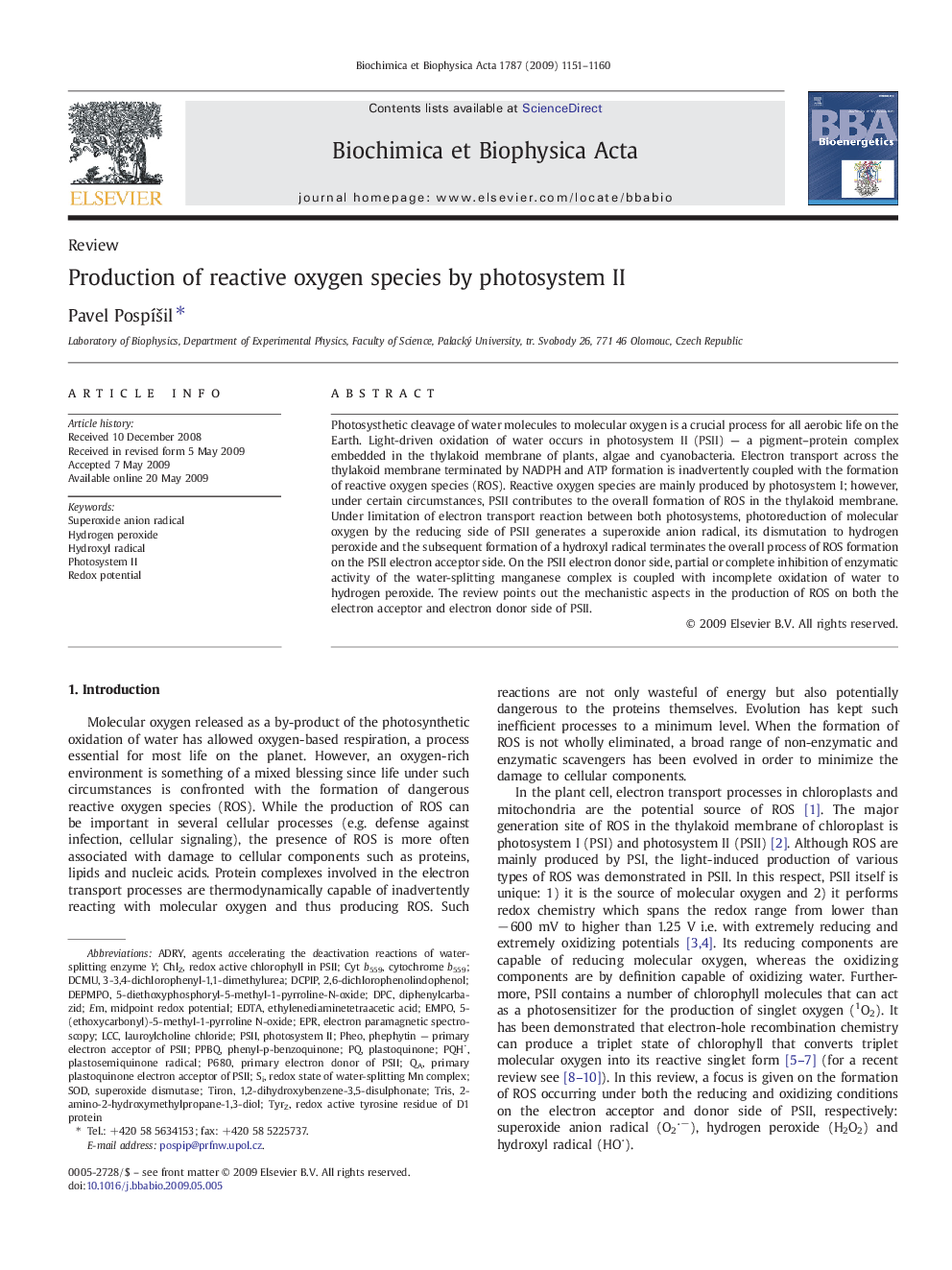| Article ID | Journal | Published Year | Pages | File Type |
|---|---|---|---|---|
| 1943058 | Biochimica et Biophysica Acta (BBA) - Bioenergetics | 2009 | 10 Pages |
Photosysthetic cleavage of water molecules to molecular oxygen is a crucial process for all aerobic life on the Earth. Light-driven oxidation of water occurs in photosystem II (PSII) — a pigment–protein complex embedded in the thylakoid membrane of plants, algae and cyanobacteria. Electron transport across the thylakoid membrane terminated by NADPH and ATP formation is inadvertently coupled with the formation of reactive oxygen species (ROS). Reactive oxygen species are mainly produced by photosystem I; however, under certain circumstances, PSII contributes to the overall formation of ROS in the thylakoid membrane. Under limitation of electron transport reaction between both photosystems, photoreduction of molecular oxygen by the reducing side of PSII generates a superoxide anion radical, its dismutation to hydrogen peroxide and the subsequent formation of a hydroxyl radical terminates the overall process of ROS formation on the PSII electron acceptor side. On the PSII electron donor side, partial or complete inhibition of enzymatic activity of the water-splitting manganese complex is coupled with incomplete oxidation of water to hydrogen peroxide. The review points out the mechanistic aspects in the production of ROS on both the electron acceptor and electron donor side of PSII.
